Introduction
Workplace diversity means a set of differences that exist between employees in a working environment. This form of diversity includes gender, race, ethnicity, age, personalities, organisational function, and the level of education among others. Diversity involves both the way people see themselves and how they see others. The perception of the people influences how they interact. Organisations with a wide range of employees’ backgrounds have to structure mechanisms of handling peer-to-peer communication and adaptability in the workplace for satisfactory results. Diversity management “involves creating and maintaining a positive working atmosphere”1. In this case, the differences between employees are highly appreciated for the involved workers to function optimally and help the organisation reach its goals.
The Gulf nations are perceived to be having limited economic competitiveness in the global set up. This perception is occasioned by the political, economic, and social challenges facing these nations. The United Arab Emirates (UAE) is one of the countries experiencing numerous challenges, which include evolving population changes, the capacity of the natives to secure job opportunities in a competitive environment, gender, and diversity problems among others. In the Gulf region, robust economic growth has been experienced due to the rapid development occasioned by oil revenues. For continued and sustainable growth, the UAE has been enlisting the services of qualified expatriates because the natives do not have the requisite skills and knowledge. With time, these countries have become dependent of the expatriate workforce.
This assertion holds because the foreign workers accept low wages, they can work for long hours, and they can withstand poor working conditions, as opposed to the UAE nationals. Consequently, expatriates constitute over 60% of the total labour force in the UAE. In addition, the UAE government is looking for ways to reduce the dependency on oil as the only revenue generation, hence the need to for qualified expatriates to support the diversification efforts. With this continued mix of nationals, it is likely that the countries will experience issues of diversity in the work environments.
Therefore, the UAE is under intense pressure to manage diverse cultures and races. This aspect leads to an increased need for human resource managers in the UAE to understand and implement diversity management strategies in a bid to manage these diverse groups effectively. Unfortunately, organisations in the UAE have inconsistent methods and policies of managing workplace diversity. Diversity is an important asset in organisational set-ups. It is an important tool for sustaining equality of access and opportunities in the workplace. Organisations that support “equal opportunity gain the most benefits of a multicultural work force.”2 All the initiatives that support diversity aim at ensuring that the employers do not waste talent.
Most business executives emphasise the employee assimilation process. In this process, employees have to assimilate the dominant culture by learning the common language and workplace training. However, these executives should adopt a pluralistic approach that transcends nationalities to set a common ground based on values, attitudes, and communication practices. Due to the nature of labour in the UAE, this paper seeks to explore whether the management of diversity has evolved in the UAE’s workplace. This goal will be achieved by studying the methods that Dubai Airports has taken in a bid to manage diversity and eliminate differences among people in disparate demographics.
Therefore, this study answers the following questions:
- What are the steps taken by the Dubai Airports to manage diversity?
- What are the key issues, drivers, and ethical issues for managing workforce diversity in the organisation?
- How can diversity promote competitive advantage?
- What is the strategy plan suitable for the organisation?
The paper will employ a qualitative approach to gather a complimentary set of data about managing diversity in the Dubai Airports. A qualitative research method will provide various ways of determining practical concepts. The paper will add knowledge on the available information about the communication processes within the Dubai Airports.
Literature Review
In the recent years, stakeholders are viewing how organisations operate, due to the numerous changes happening in the global market especially with the ever-increasing rate of globalisation. For instance, a Pakistani expatriate could be working in Dubai for a UK company, and interacting with a Kenyan work mate. From this scenario, it can be inferred that an organisation is not only a workplace, but also a mini-society with its own culture and sub-cultures.
This assertion holds because the organisations are made of employees who work and interact while sharing their lives for a given period. While in the organisations, employees have to work, communicate across languages, and learn the cultures of their colleagues. On one side, culture underscores the rationales, styles, values, and characters, which are generally accepted amongst a given group of individuals living together. In addition, the elements of culture move from one dispensation to another via communication and learning. On the other side, “diversity broadly refers to very many demographic variables and some of them include race, religion, colour, gender, nationality, disabilities, age, and education among others.”3 Therefore, workplace diversity underscores the differences and similarities existing amongst employees in terms of these demographic variables.
Due to the increasing rate of globalisation, diversity is inevitable in the workplace. Despite being regarded as advantageous, diversity can result in communication problems and intercultural conflicts, thus interfering with the smooth flow of the organisations’ operations. Therefore, diversity stands as one of the modern challenges facing organisations. A diverse environment encourages new ideas and creativity in solving problems. However, “if not dealt with properly, intercultural interactions could cause conflicts; therefore, by understanding and acknowledging culture as a way of improving communication channels, employees could make useful and adaptive choices in an organisation.”4 Therefore, culture could be used emphasise similarities as opposed to pointing out differences.
For employees in an organisation with a diverse workforce, there are “four methods of acculturation behaviours, viz. assimilation, separation, de-culturation, and pluralism.”5
Assimilation
This term refers to the process where employees are forced to adapt to the culture of the company. In this case, other cultures are assimilated before being obviated. In this case, the minority culture meets the needs of the dominant culture. Assimilation implies that employees have to forget about their cultures and adopt the dominant organisational principles and tenets.
Separation
Separation method “limits the contacts amongst the diverse groups, thus promoting partitioning from a spatial, cultural, and technical perspective.”6
De-culturation
In this case, there is no superior culture. This kind of environment could be guided by a recruitment policy that eliminates cultural differences and promotes grouping of like-minded people together in a bid to counter misunderstanding.
Pluralism
In pluralism, “cultural symbiosis emerges from the perception that each minority group has a positive contribution towards the growth and development of an organisation.”7 Demographic equality is appreciated in pluralism, and thus differences can be expressed and different cultures are appreciated. This method is seen as the key to success for big companies.
Mostly, the majority of companies employ the assimilation method of acculturation by demanding employees to have the capacity to adapt to new environments. Therefore, such organisations are not concerned with understanding the employees’ backgrounds. However, “the desire and interest in diverse cultures can help employees understand each other, and this would not compromise the goals and objectives of the organisation.”8 Diversity enhances the organisations’ ability to communicate with diverse customers. This aspect promotes the general objectives of the organisation.
Contemporarily, organisations are becoming increasingly aware of the importance of managing workplace diversity. Therefore, they have come up with systems of dealing with the issue for optimum results in the workplace. Employers can influence diversity to come up with specific policies that promote relationships among employees of diverse backgrounds. The nature of “the UAE’s working environment is unique due to the influx of expatriates, and thus organisations within the country need to evaluate the effectiveness of their diversity strategies.”9 Many scholars attest to the view that giving much attention to the way people from diverse backgrounds communicate makes an organisation more effective. This paper seeks to evaluate the steps taken by the Dubai Airports to handle the issues arising from diversity.
Emiratisation
Emiratisation is a nationwide program across the UAE, which was launched a decade ago, aiming at assimilating the UAE workforce in the labour market. Although the majority of the UAE citizens are highly educated, it has been difficult for them to secure suitable employment opportunities. Therefore, the Emiratisation program is instrumental in helping the UAE graduates. In this program, the government’s role is to interact with key industry stakeholders to provide employment opportunities for the graduates whose number continues to increase rapidly every year. The number of the Emirati graduates looking for jobs range between 12,000 and 13,000 every year. It is estimated that, 80 percent of this number entails female job seekers, with the majority of them having high academic qualifications.
In 2004, “the UAE’s Ministry of Labour made it mandatory for employers in the trade sector having more than 50 employees to achieve a two per cent Emiratisation.”10 This move was followed by the categorisation of companies depending on how they meet the two per cent target.
Those achieving the “target are in Category A whereas those failing to meet the requirement are in either Category B or C and the benefits of companies being in category A is the reduction of transaction fees, while those in categories B and C face fines and increased fees.”11 Companies that do not cooperate with the regulations of the ministry about Emiratisation face suspension of their operations. Due to the numerous demographic challenges that the UAE is facing, the “Emiratisation is emerging as an outstanding issue on the national agenda and as the country seeks to offset many imbalances in the composition of its population and workforce, this aspect has always inspired the socio-economic development strategies.”12
As success to education is the key to the progress of the Emiratisation program, the UAE government is making huge investments in higher education in private and public sectors. This aspect shows the level of its determination to prepare new generations of young men and women to be the backbone of a robust private-sector economy. A bigger challenge facing the Emirati graduates is that the international private businesses based in the UAE are urging them to seek further training in a bid to cope with market challenges.
The employers have also remarked that the Emirati study subjects are not relevant to the market needs. Despite the noted challenges, the government is still determined to ensure the success of the program. This human resource challenge adds to the diversity problem. The managers in the UAE have to comply with this government program so that their organisations enjoy the attached benefits and avoid the non-conformity labels.
Equal opportunity employment
Equal opportunity employment means providing access to job opportunities for all people regardless of their race, colour, national origin, gender, religious beliefs, age, disabilities, pregnancy, sexual orientations, inherited genetic characteristics, and marital status among others. Equal opportunity employment and diversity are inter-related. The two aspects aim at achieving equal opportunity at the place of work. Diversity seeks to avail equal job opportunities for everyone in a competitive market. The concept of equal employment opportunity holds that individuals should access the same chances of getting a certain job, which also amounts to fairness and transparency.
In the UAE, there are no government policies or laws governing equal opportunity employment or non-discrimination in the workplace. Consequently, there are no statutory remedies for discrimination or harassment at the workplace. Due to its economic attractiveness, the UAE attracts immigrants from the neighbouring countries who comprise over 60 percent of the total labour force in the country. The immigrants provide both skilled and non-skilled labour. Due to the immigrants, the UAE’s labour authorities issue temporary work permits in a program known as the Kafala sponsorship. This program allows companies to employ immigrant workers. The sponsorship program has caused several challenges in the UAE.
The greatest challenge is ensuring employment opportunities for the UAE citizens. Another challenge is coming up with accommodative policies to ensure that immigrant workers get humane treatment once they get into the UAE. The available system is dysfunctional in protecting the immigrants’ rights in the workplace, and thus they end up facing numerous challenges including abuse and exploitation. Sexual abuse and violence have also been reported in the workplace.
In a bid to respond to these challenges, the government has revised its labour laws together with mutual agreements with countries sending workforce to the UAE. The government has also increased its international collaboration on labour issues. Consequently, the protection of the employees’ rights is now taking place even at the Emirate-level governments. In terms of federal and Emirate-level labour laws and regulations, there has been some development towards addressing labour challenges in the country.
The Dubai Airports
As at 2014, the Dubai International Airport had overtaken the Heathrow of London to be the world’s busiest international airport having more than 70.4 million passengers passing through the airport annually. The Dubai Airports’ focus remains clear on providing the best airport experience to the passengers. Throughout 2014, “the company continued to refine and introduce further innovative solutions to the overall passenger experience while finding new ways to increase efficiencies in operations.”13 Dubai Airports is recognised and highly reputable due to the unparalleled experience that it offers to its customers in the process of connecting them to over 260 destinations that it serves through over 140 airplanes. The Airport staff members endeavour to be proud and responsible corporate citizens of Dubai, the UAE, and the world.
The company maintains a competitive employee proposition of more than 3,100 workers from 56 countries. The company makes sure that all employees are united around its target of managing the world’s busiest and best airport, while increasing its ability to attract the best talent available. In 2014, the company launched a reorganisation program that aimed at installing strong business processes, leadership, and the people’s support to the development as well as driving the new focus.
According to the initial planning of the program, which was proposed in 2008, the restructuring program “will see the Dubai Airports deliver on its strategy by optimising the skills available in the business without significantly increasing the number of its employees.”14 The program was after careful investigation of what will be required by each role to support the growth of the company’s strategy. The company has realigned its management and leadership structure in order to steer the organisation during the time of change and growth.
The change strategy includes selecting the qualified people and matching their capabilities with the right roles and then equipping them with the right development skills to pursue growth. The reorganisation process has been successful in the two phases, which have taken a short time of 4 months. Much of the change had been focused on operations in terms of the NextGen program, which saw the configuration of the operations team to support more proactive management of the Dubai Airports. The change also led to the birth of a new performance and monitoring department, which is mandated solely to forward-looking and ensuring that the teams in operation have the adequate resources and the necessary information necessary to manage smooth daily airport operations. The department’s recruitment began in 2014 and it continues into 2015.
The Dubai Airports has strived to enhance its reputation of being the employer of choice through the implementation of initiatives that support employees while at work and enriching their lives back at home. Consequently, the company has experienced a low employee turnover rate of just 4 percent in 2014. The turnover has been falling each year from 4.2 percent in 2013 and 5.4 percent in 2012. The organisation is continuously absorbing the UAE nationals to play important roles in the management of the airports. This move has facilitated a growing number of the Emirati citizens to join the company or rise through ranks to senior positions.
Dubai Airports nurtures its talented employees continuously. There is a wide range of development programs in the company such as Masaar, Tatweer, and Qaa’ed. These aspects have played a key role in creating committed and efficient workforce. Through the program, the company has been in a position to identify qualified UAE nationals for valuable training needs.
Research Methodology
This study used a qualitative approach to gather a complimentary set of data about managing diversity in the Dubai Airports. Qualitative research method provides various ways of determining practical concepts. It helps to gain sufficient information about the communication processes within a particular setting. One of the ways of learning intercultural communication is via the use of emics. Emic “means things that are unique to a selected culture.”15 On the other hand, a cross-cultural research focuses on ethnic groups with the sole objective of studying the difference and similarities that exist across the selected cultures. This research is qualitative and rudimentary in an attempt to study the cross-cultural issues within the Dubai Airports, which has both foreign and native cultures.
Qualitative research is used to understand and interpret a phenomenon. The researcher collects data and uses it to provide a detailed description of the study subject. Qualitative research uses a small sample size and the design of the research can be adjusted continuously to suit the situation. Some of the methods used in collecting data are direct observations, interviews, analysing public and private documents, examining the available physical evidence, and taking photographs and videotapes. Data obtained is mainly in the form of verbal views
Qualitative research uses verbal views of the sampled population to describe a given phenomenon. This method gives a better understanding of the structural features, processes, and patterns of social realities. The strength of qualitative research comes from using an inductive approach in qualitative research with a focus on specific situations or people and verbal words rather than numbers. This method has two major limitations. It involves the use of complex and expensive selection of a qualified interviewer. In addition, the method uses a small sample size.
This research involved the use of Likert-scale questions in data collection. This tool is used to find out the extent to which a respondent believes in the subject. The statement presents the respondent with a frequency scale and the responses are fixed choices. For example, the respondent could rate a service on a scale of 1 to 5. The research involved surveying middle-level managers and employees to gather an in-depth understanding of their perception on various aspects of diversity. In a bid to increase the reliability of the information collected, the questionnaires used had different wording for the same attributes, but retained the intended meaning. One hundred staff members were surveyed and their responses are shown in the next section.
Research Results
Language and communication
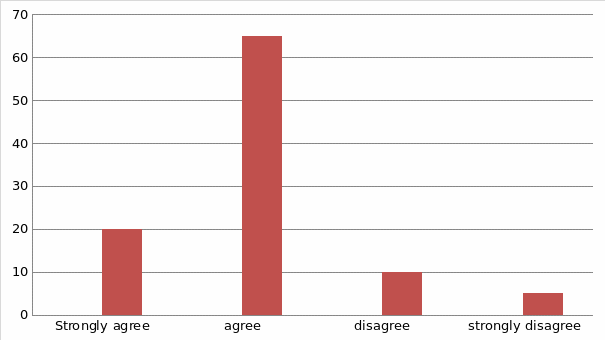
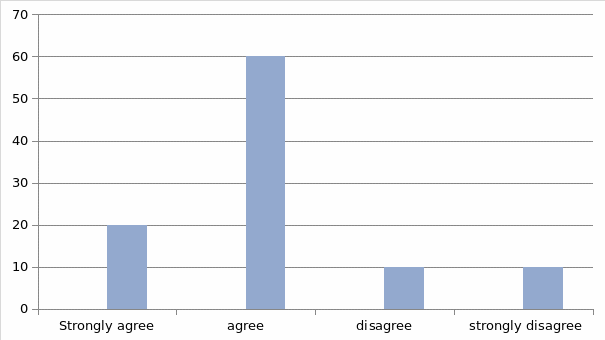
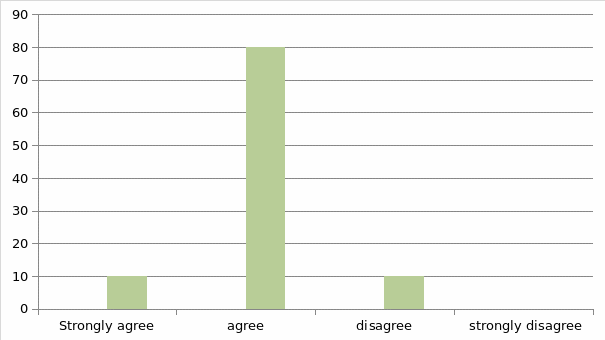

Diversity policies and practices
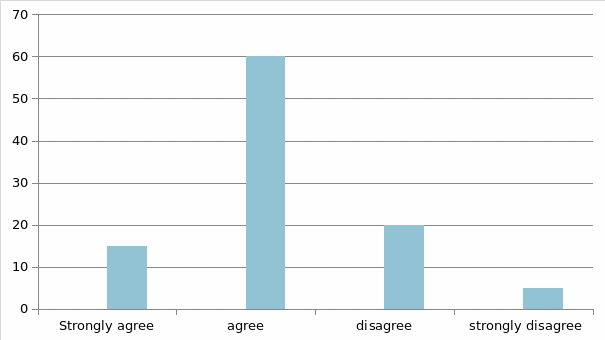
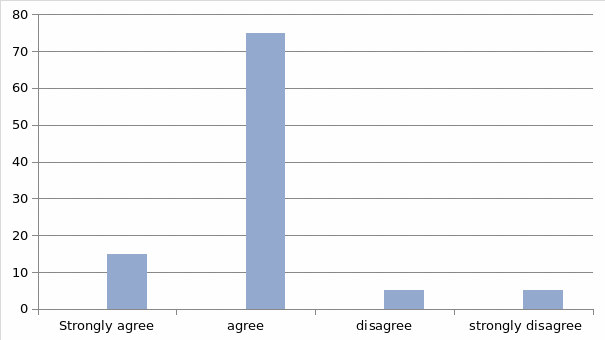

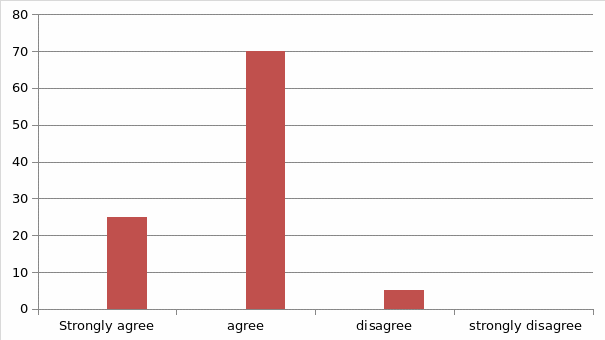


Discussion
Diversity in language is a major constituent of cultural differences. From the question of language, respondents of the survey agreed that the organisation has a common language that employees use to communicate with their colleagues from diverse backgrounds. Therefore, there is no language barrier in the organisation. In addition, from the results, there is a clear indication that the company uses signs and symbols that the message being passed is understood by all the workers. It appears that the organisation has handled the diversity issue in language satisfactorily. This assertion holds because from the results, employees find it easy to communicate with one another and the public.
On policies and practices, the majority of the employees agree that the company has good policies to manage diversity, and thus the employer respects their rights. There is a strong indication that employees are treated fairly and they are convinced that what the management is doing to manage diversity is satisfactory. The majority of the respondents disagree that their nationalities determine how the employer deals with them.
The company runs various programs aimed at involving and motivating its staff members. This aspect is the main reason why there is a positive perception of every aspect. The company recognises that in a bid to remain an employer of choice, it must go the extra mile to find new and innovative ways that add value for every employee. The organisation seeks to create an environment where the entire employee community feels as part of Dubai. According to the company, this aspect is integral to its success, and it adds and refines its initiatives continuously, which include sporting events, training seminars, and other activities.
In every year, Dubai Airports selects employees with high-performance and high potential to attend a range of development programs. In a year, more than 50 employees complete their development through these programs. In early 2014, the company opened a LaunchPad, which is a new state-of-the-art centre for learning and development. The LaunchPad centre has a wide range of facilities for employees who aspire to better their education and skills. It has a new library and learning zones equipped with the latest training technologies.
In a move seeking to attain first-class learning and development initiatives, the company has launched a training program named the ‘Seven Habits of Highly Effective People’. So far, 80 employees have attended and completed the program. For the well-being of all employees and the community, Dubai Airports takes several steps to assist the less fortunate in society. The company uses its unique assets to help save lives or alleviate the challenges facing individuals in the community. In addition, the company supports the enrichment of cultural and sporting life in the UAE through various activities.
For instance, the company has continued to support the Dubai Cares by donating boxes across Dubai. Dubai Cares is a charity organisation that seeks to improve access to primary education in developing countries. Dubai Airports has been supporting this charity work since it was launched in 2007. Dubai Cares has to date reached more than 10 million children in over 35 countries.
As opposed to many organisations, Dubai Airports does not assimilate its employees to a certain superior culture. However, employees have to adapt to the company’s fast-paced environment. Nevertheless, the employees’ desire and interest in diverse cultures help in understanding each other in the workplace, and this aspect does not compromise the goals and objectives of the organisation. Diversity enhances the company’s ability to communicate with diverse clients and this aspect promotes the general objectives of the organisation. Contemporarily, organisations are becoming increasingly aware of the importance of managing workplace diversity.
Conclusion
After conducting the research and reviewing the literature available, the research questions are answered below.
What are the steps taken by the Dubai airport company to manage diversity?
The company has taken five key steps to manage diversity in its workplace. First, the company emphasises communication by ensuring that all employees understand the company’s policies. In addition, the company works tirelessly to ensure that the issue of language barrier does not restrict employees. Signs and symbols are also used so that every employee can understand the message being passed around. Second, the company views its employees as individuals. Managers try as much as possible to avoid both negative and positive stereotypes by judging successes and failures individually. The company reminds its employees frequently about anti-discrimination policies. Third, the company encourages its employees to work in diverse groups. This goal is achieved by ensuring that the work teams reflect the diversity of the organisation. Fourth, managers are encouraged to base their decisions on an objective criterion. In this case, all employees, regardless of their backgrounds, are expected to meet all the set standards and perform to their best. In the company, managers focus on job-related issues as opposed to personal issues. Lastly, the company encourages open-mindedness. Managers are encouraged to set diversity examples by building relationships with their colleagues from different backgrounds.
In addition to the above steps, the company adheres to the requirements of Emiratisation as set out by the Ministry of Labour. According to the ministry, companies have to observe the minimum number of native employees needed in the workplace failure to which fines and penalties are imposed. On one side, companies that meet the set requirements get incentives and reprieves. On the other side, companies that do not cooperate with the regulations of the ministry about Emiratisation face suspension from their operations. Dubai Airports is fully compliant with this requirement.
What are the key issues, drivers, and ethical issues for managing workforce diversity in the organisation?
A diverse workplace includes employees having varying beliefs. These beliefs may sometimes conflict with the organisation’s diversity policies. Managers should be aware of these issues and be prepared to tackle them. The policies should clarify that employees must respect their colleagues in the workplace. In a diverse workplace where gender equality is embraced, several ethical issues may arise. In some parts of the world, chauvinism is legal, and thus women subjugation is normal.
Therefore, people from these countries have challenges when working in different environments where gender equality is encouraged. Similarly, in some parts of the world, males and females are not allowed to interact professionally and this aspect creates conflict in the workplace where the two genders have to work together. The management has to address these cultural issues without discrimination or compromising the diversity initiatives of the organisation.
In a bid to have a diverse workforce, hiring manager must recruit the qualified candidates for the intended position without considering demographic characteristics. Recruitment resolutions made in a workplace considering diversity may cause conflict between the diversity objectives and guidelines for equal opportunity employment. Due to cultural conflicts, a business may force its employees to follow some ethical procedures. In some places, some processes require businesses to pay for approval of applications like permits and other statutory applications. On the other hand, government officials may look at those service charges as bribes, which are illegal. Therefore, organisations should train their employees on anti-bribery practices so that everyone knows what is acceptable in accordance with the law.
Drivers of diversity management include adaptability and flexibility in a fast changing workplace, attracting and retaining the talents, and minimising expenses that are attached to employee turnover. Others include being absent and underperformance, profits gained after implementing diversity initiatives (return on investment), policies and practices, increased market coverage due to expanded customer base owing to diversity and increased sales, hence profits.
How can diversity promote competitive advantage?
Diversity is an important asset in organisational set-ups. Diversity is an important tool of “sustaining equality of access and opportunities in the workplace, and thus organisations that support equal opportunity gain the most benefits of a multicultural work force.”16 Therefore, managers should appreciate diversity so that they can utilise all the talents within the workforce. When “employees feel respected and their differences accommodated, they function optimally, hence making meaningful contributions towards achieving the main organisation goals.”17
Employers who manage diversity appropriately experience increased work satisfaction, high productivity, and retention of staff. Diversity also promotes the acceptance of an organisation by its customers.18 Diverse workforce leads to innovation due to the diversity of experience, backgrounds, and opinions.
What is the strategy plan suitable for the organisation?
Diversity and inclusion Strategy – The Dubai Airports pledges its commitment to fostering, cultivating, and preserving a culture of diversity and inclusion
As a company, we value our human capital. Our individual differences strengthen us because everyone is unique and by contributing novel ideas to the organisation, we stand out as unique. We at Dubai Airports recognise and acknowledge the differences in demographic variables of our employees, socio-economic status, and the entire characteristics that create our uniqueness.
Dubai Airports’ initiatives of diversity are applicable to all our practices, policies, and on the development of work environment built on gender and diversity equity to enforce:
- Communication among employees respectfully.
- Cooperation amongst employees.
- Teamwork that allows the representation of all groups.
- Flexible working schedule that accommodates the varying needs of the employees.
Employees of the Dubai Airports bear the responsibility of treating their colleagues with dignity at all the times. Employees should conduct themselves properly regardless of where they are because they are the face of the company to the public. In other words, employees are the company’s brand promoters, and thus they are required to behave accordingly whether on or off duty. In a bid to fulfil this responsibility, all employees should attend the annual diversity training and awareness program. Any employee who conducts him/herself inappropriately towards others is subject to disciplinary action. Employees should immediately report any suspected act of discrimination to their supervisors or the human recourses office.
Limitations of the study
- The Research is limited only to the employees of Dubai Airports, Dubai.
- The research was conducted within one day.
- The sample size chosen was small.
- Respondents were very busy, and thus they could not give detailed information.
- Respondents could have given biased information.
Bibliography
Barak, M., Managing Diversity: Toward a Globally Inclusive Workplace. Sage, Los Angeles, 2011. Web.
Browaeys, M. & Price, R. Understanding Cross-Cultural Management. Prentice Hall, Harlow, 2008. Web.
De Anca, C. & Vázquez, A. Managing Diversity in the Global Organisation Creating New Business Values. Palgrave Macmillan, Basingstoke, 2007. Web.
De Bono, S., Jones, S. & Van Der Heijden, B. Managing cultural diversity. Meyer & Meyer, Maidenhead, 2011. Web.
Groschl, S. & Bendl, R., Religious Diversity in the Workplace: Examples from Around the World. Gower Publishing, Farnham, 2015. Web.
Nicolopoulou, K., Karatas-ozkan, M., Taylor, J. & Tatli, A., Global Knowledge Work Diversity and Relational Perspectives. Edward Elgar, Cheltenham, 2011. Web.
Randeree, K., ‘Strategy, Policy and Practice in the Nationalisation of Human Capital: ‘Project Emiratisation’, Research and Practice in Human Resource Management. vol.17, no.1, pp. 71-91, 2015. Web.
Robertson, Q., The Oxford Handbook of Diversity and Work. Oxford University Press, Oxford, 2014. Web.
Salehi, R. Emiratisation and Its Implications on Managing Workplace Diversity: A Case Study of Private Sector Firms in Dubai, UAE. King’s College London, London, 2012. Web.
Williams, S. & Adam-Smith, D., Contemporary Employment Relations: A Critical Introduction. Oxford University Press, Oxford, 2009. Web.
Wilson, T., The Human Equity Advantage: Beyond Diversity to Talent Optimisation. Wiley, New York, 2013. Web.
